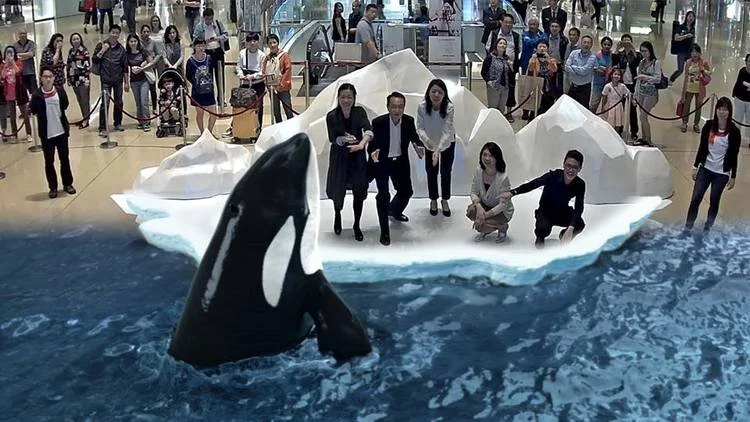We Saw the Future of Augmented Reality in a Field in 2011 and it Blew Our Minds
Technology. The empower of people, the future of all and most importantly the creator of hilarious entrepreneur folklore since the establishment of the computer. The stories that often accompany tech advances are usually too fantastical to take seriously. Chance happenings, opportune failures that led to epic discoveries. Hardware, then DotCom stories began it all and now each advance creates a new batch.
The truth though is often a little less glamorous. Augmented Reality is one such evolution that goes back much further than just being the "future of VR", and with a much more linear path to growth. For those of us lucky/unlucky to be around before most of the technology actually worked properly, this has been a long, long time. In that time we've all seen lots of failures. More than most, INDE has been at the forefront of finding out what was possible a way before it was possible. Yet we never really understood the true power of AR until we stood eating an ice cream in a field on the Isle of Wight.
In 2011 as a fledgling company exploring AR we were, to put it simply, trying to consume as much information as we could. The technology was clearly fascinating. Its use cases were interesting. Our assumption was that while marker-based AR displaying content on tables, books etc was great, it still felt like it had a long way to go. Content quality was middling, tracking was acceptable, but the setup felt a little forced, a little restrictive.
After an approach by the BBC and 20th Century Fox and their agencies, we began the discussion around how to create a new type of AR application that would offer people the opportunity to view 3D content within a physical landscape. By the time we finished the development we were shocked by what we'd uncovered and where it would eventually lead us and many more.
Mapping the Physical Space
Pointing an iPad at a marker and seeing it render 3D was already an incredible experience. The concept of using the physical view of the world to place the content did not exist in any real form in 2011. By cheating our 3D to appear in the fields we felt like the whole game changed. In truth, it had.
Changing our View of Reality
Back in 2011, iOS devices were powerful enough to render Unity-based 3D content up to a point of quality. Limitations in texturing, lighting and amounts of content kept us back from achieving the true goal of placement of photo-real content. The result? Imagine not being able to tell the difference between placed content and real world. Terrifying.
AR as Entertainer
Building out the Walking With Dinosaurs application illustrated to us that people are willing to travel for digital entertainment in the real world. The treasure hunt approach allowed families to navigate between sites easily to experience more. AR had a genuine place in the entertainment mix and could work anywhere in the world.
AR as Educator
With a background in advertising, our obvious first instincts were to use AR's power to display any object, anywhere to promote products. Walking with Dinosaurs quickly made us realise that AR had a tremendous ability to engage and educate simultaneously. Only now are we beginning to see its power for classrooms and beyond.
Hands Free
Walking with Dinosaurs was an epic experience but with the major limitation that you had to hold a device to see the content appear on the landscape. Imagine if you could achieve the same or more with a glass style device? Enter HoloLens, Magic Leap et al.

